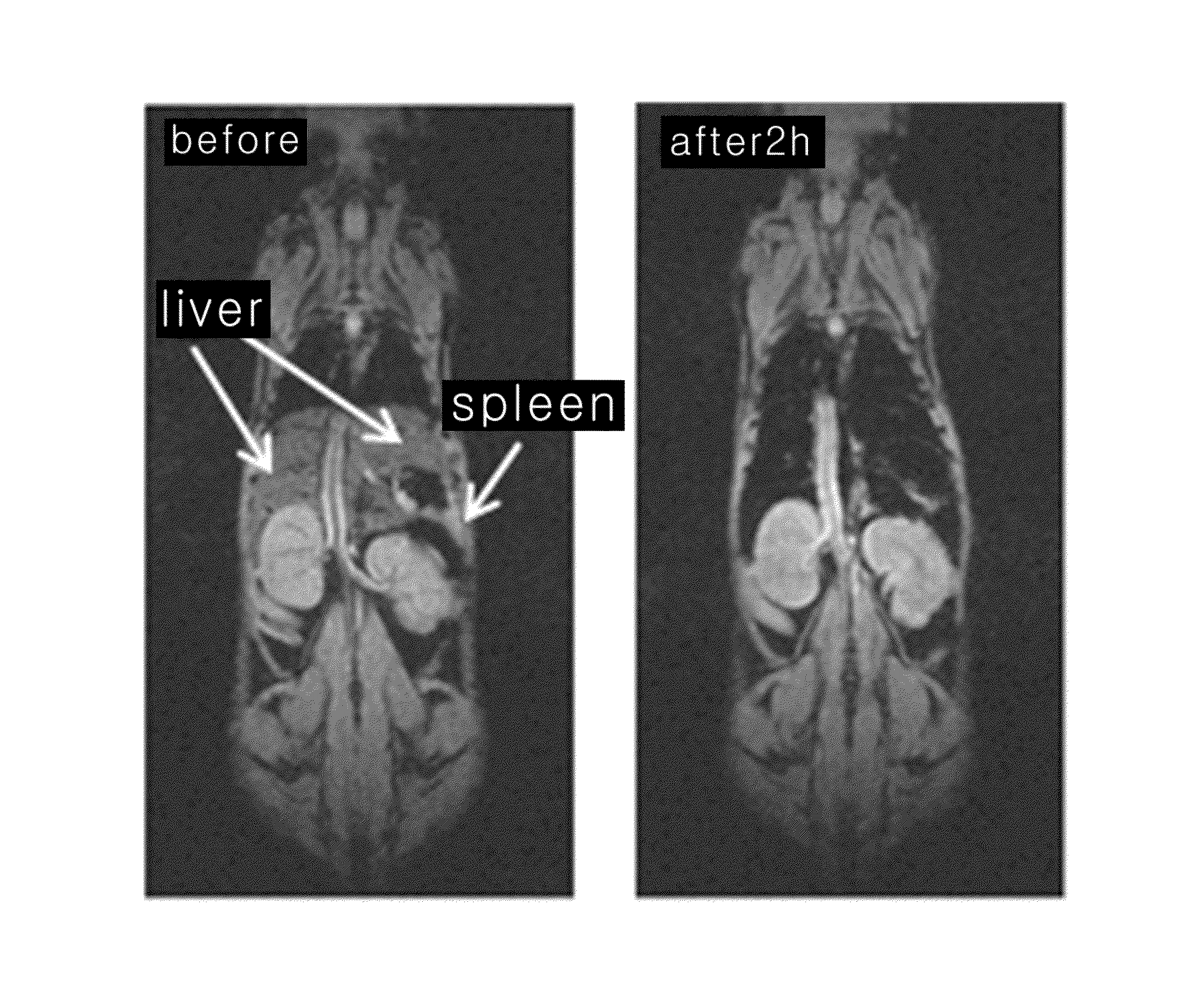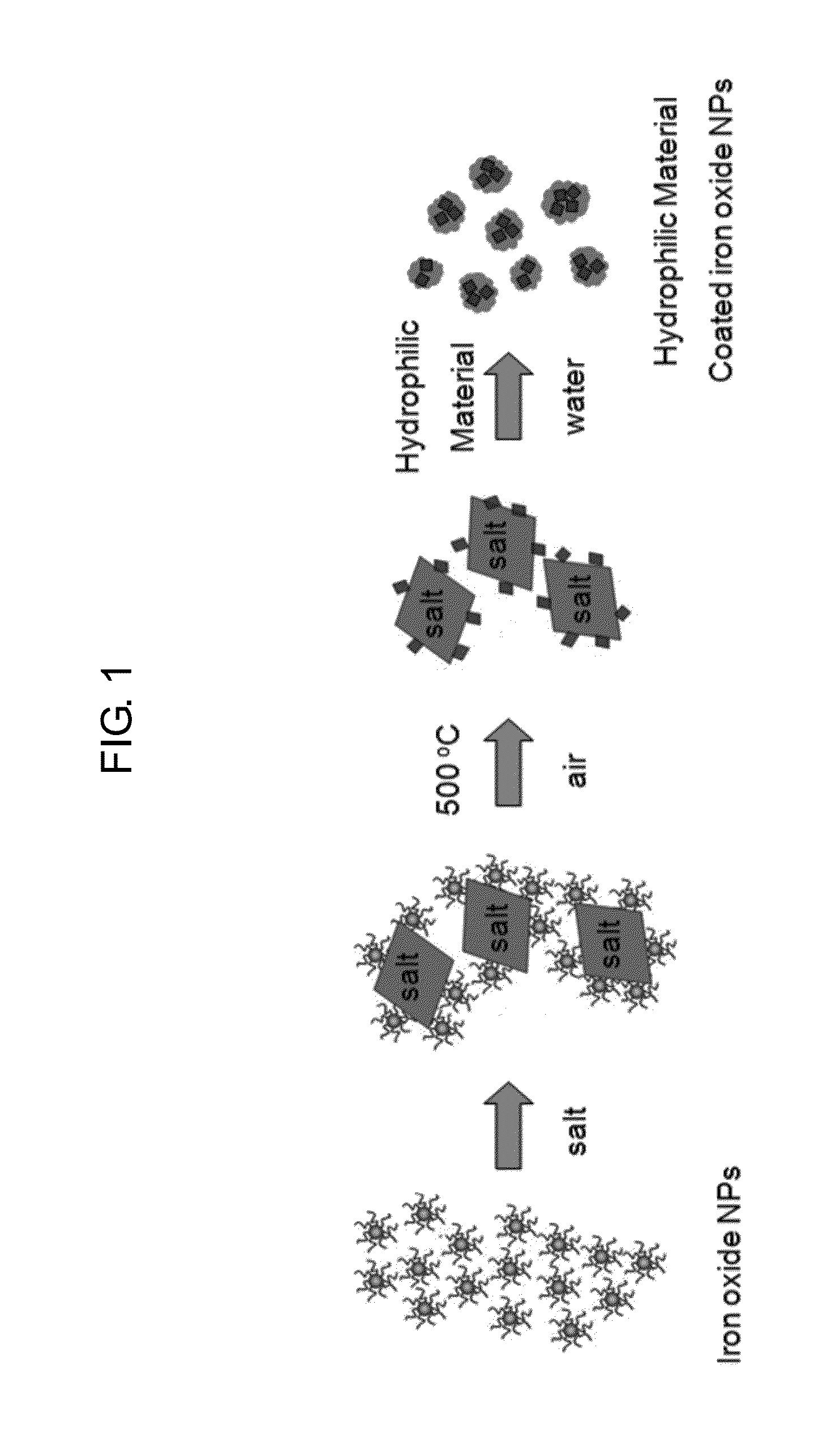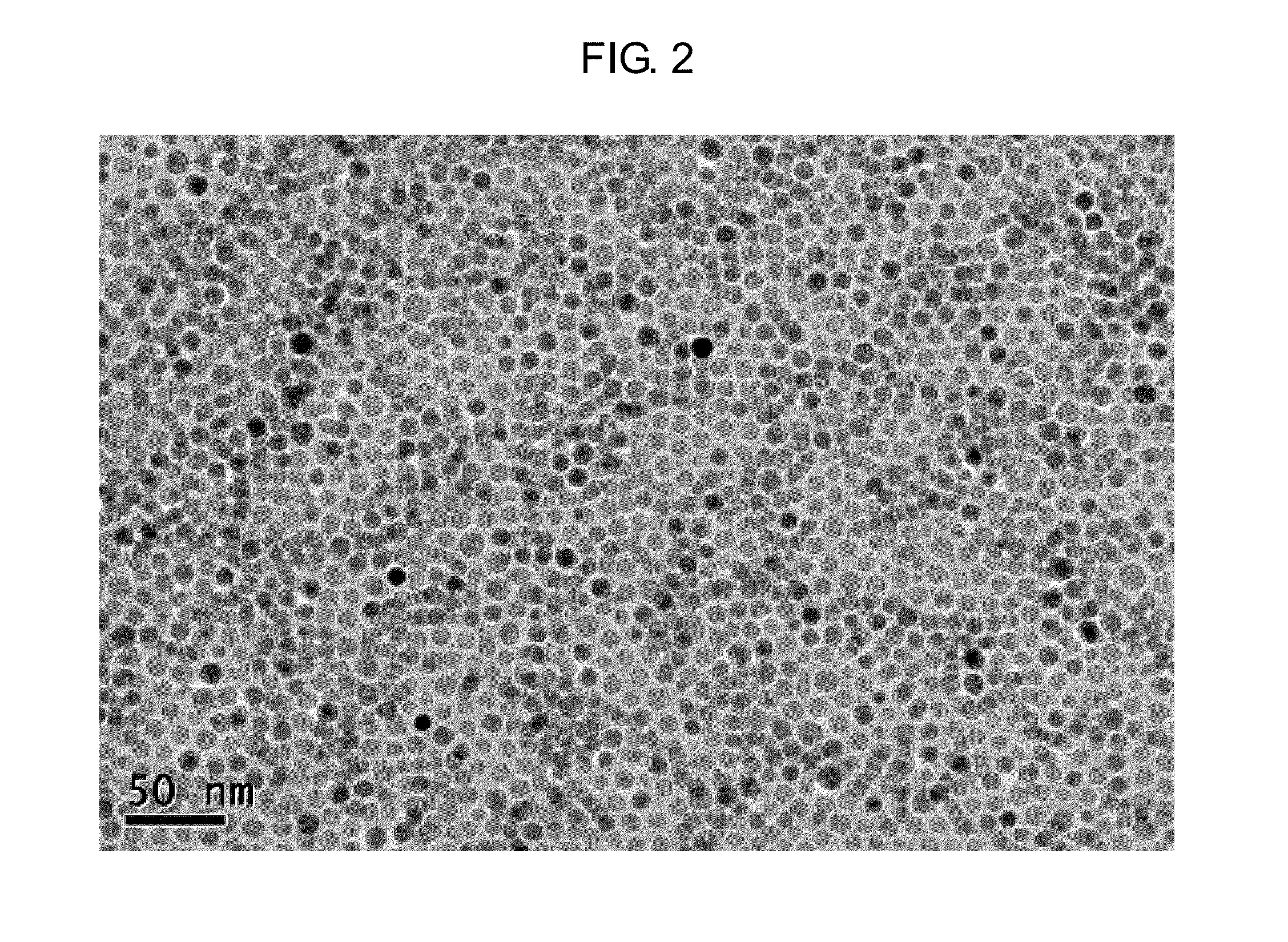Method of preparing iron oxide nanoparticles coated with hydrophilic material, and magnetic resonance imaging contrast agent using the same
a technology of hydrophilic materials and contrast agents, which is applied in the field of preparing iron oxide nanoparticles coated with hydrophilic materials, and magnetic resonance imaging contrast agents using the same, can solve the problems of lowering the magnetism, difficulty in high-temperature reaction 100° c. or more, and some defects in iron oxide nanoparticles thus manufactured, so as to enhance the magnetism of iron oxide nanoparticles, increase the crystallinity of nanoparticles, and high biocomp
- Summary
- Abstract
- Description
- Claims
- Application Information
AI Technical Summary
Benefits of technology
Problems solved by technology
Method used
Image
Examples
preparation example
Synthesis of Iron Oxide Nanoparticles
[0047]Iron oxide nanoparticles were synthesized from an iron oleate complex prepared in a 100 L pilot plant according to the method disclosed in J. Park et al. Nat. Mater. 2004, 4, 891. This iron oleate complex was obtained by reacting sodium oleate with ferric chloride hexahydrate (FeCl3.6H2O). Specifically, 1.08 kg of ferric chloride hexahydrate and 3.65 kg of sodium oleate were mixed with a solvent mixture comprising 6 L of water, 8 L of ethanol and 14 L of hexane and reacted at about 60° C. for 1 hr with vigorous stirring. The transparent lower layer was removed from the separated two layers and the remaining brownish organic layer was mixed with water after which the water layer was removed again to remove the remaining aqueous salt. This water-washing process was repeated three times. The hexane solvent was evaporated from the purified complex solution, thus obtaining an iron oleate complex.
[0048]3.6 kg (4 mol) of the iron oleate complex th...
example 1
[0049]Preparation of iron oxide nanoparticles having no organic material via annealing treatment of mixture comprising iron oxide nanoparticles and salt particles, and measurement of magnetism and hydrodynamic diameter of the iron oxide nanoparticles having no organic material 50 mg of the iron oxide nanoparticles thus synthesized and 25 g of sodium sulfate (Na2SO4) (average particle size of 150 μm) were stirred in hexane at a weight ratio of 1:500. While the temperature was increased, hexane was slowly evaporated. Thereafter, the powder mixture of nanoparticles and the salt was heated at 500° C. for 5 hr under air conditions. After annealing treatment, an excess of the salt was dissolved in distilled water and removed via centrifugation at 13,000 rpm for 30 min. In order to sufficiently remove the salt, washing using distilled water and centrifugation were repeated several times.
[0050]Changes in physical properties of the iron oxide nanoparticles from which the organic material had...
example 2
[0053]Preparation of iron oxide nanoparticles coated with hydrophilic material via annealing treatment of mixture comprising iron oxide nanoparticles and salt particles, and measurement of hydrodynamic diameter and stability of the iron oxide nanoparticles coated with hydrophilic material
[0054]A mixture comprising iron oxide nanoparticles and salt particles was annealed in the same manner as in Example 1 with the exception that the iron oxide nanoparticles were coated with a hydrophilic material. Specifically, 1 g of a hydrophilic material (Table 2) was dissolved in 250 ml of distilled water. While the aqueous solution of hydrophilic material was stirred, 12.5 g of annealed iron oxide nanoparticles and the salt powder were slowly added at a weight ratio of 1:12.5. The iron oxide nanoparticles coated with hydrophilic material was separated via centrifugation at 13,000 rpm for 30 min. Additional washing using the aqueous solution of hydrophilic material and centrifugation were repeate...
PUM
| Property | Measurement | Unit |
|---|---|---|
| Temperature | aaaaa | aaaaa |
| Time | aaaaa | aaaaa |
| Diameter | aaaaa | aaaaa |
Abstract
Description
Claims
Application Information
 Login to View More
Login to View More - R&D
- Intellectual Property
- Life Sciences
- Materials
- Tech Scout
- Unparalleled Data Quality
- Higher Quality Content
- 60% Fewer Hallucinations
Browse by: Latest US Patents, China's latest patents, Technical Efficacy Thesaurus, Application Domain, Technology Topic, Popular Technical Reports.
© 2025 PatSnap. All rights reserved.Legal|Privacy policy|Modern Slavery Act Transparency Statement|Sitemap|About US| Contact US: help@patsnap.com



